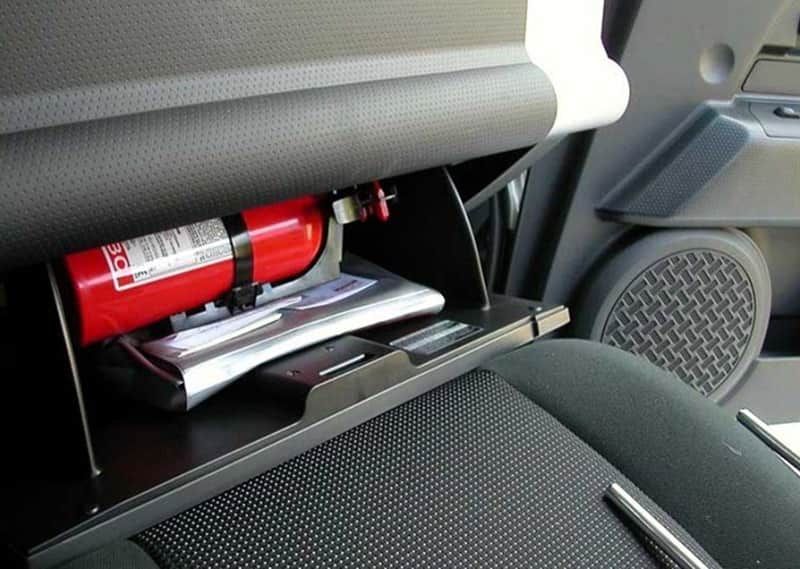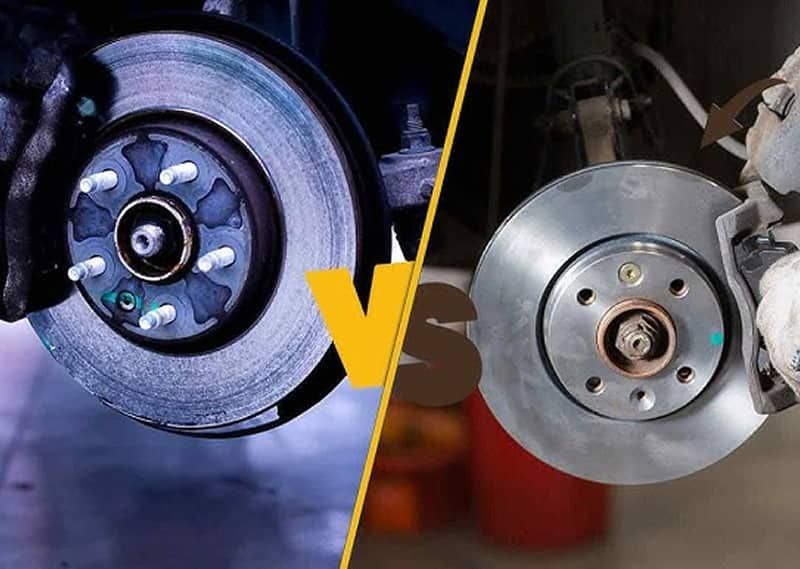A Full Handbook of Vehicle Fire Extinguishers for Every Safe Drive
Car fires, though relatively rare, can be catastrophic. The second fire breaks out, seconds count, and having a car fire extinguisher may be the difference-maker. Here, we examine whether or not you should carry a fire extinguisher in your car, the unique risks of car fires, and what type of extinguisher is best suited for protecting your car.

Why Every Car Should Consider a Fire Extinguisher
Many drivers consider fire extinguishers a luxury, but the unpredictability of car fires makes a strong safety case for them. Unlike static properties, vehicles are mobile, and access to immediate help isn’t always available if you’re stranded on a roadside highway. In addition to protecting lives, an onboard extinguisher can reduce property loss by potentially containing small fires before they have a chance to engulf the entire vehicle. A few organizations, including car safety institutes and emergency services, recommend even if your car is equipped with a fire alarm system to carry a suitable extinguisher as a reasonable backup measure.
Selecting the Right Extinguisher for Cars
There are several forms of fire extinguishers, each designed to operate with specific classes of fires. Fires in automobiles generally have a combination of Class B (flammable liquids) and Class C (electric) hazards. For these, the most widely recommended variety is the ABC dry chemical extinguisher. These types of extinguishers work by halting the chemical reaction that sustains the fire and thus are effective against fuel, electrical appliances, and even ordinary combustibles. Because of their effectiveness, they are the first choice among auto professionals.
1. ABC Dry Chemical Extinguishers:
- Flexibility: They are multi-purpose in the sense that they will extinguish Class A, B, and C fires. This flexibility is welcome in an auto setting where you are likely to encounter several possible fire sources, for instance, upholstery, fuel, or electrical equipment.
- Portability: Typically provided in small sizes (2 to 5 pounds), they are small enough to fit under a seat or in a trunk and still have sufficient extinguishing capacity.
- Ease of Use: With a simple trigger mechanism and simple-to-understand instructions, they are designed for rapid use in emergency situations.
2. CO₂ Extinguishers:
- Specialized Use: Although effective in electrical fires due to their non-conductive property, CO₂ extinguishers are less effective for flammable liquid fires. They displace oxygen in the fire area but are less effective if the car is on fire with gasoline or oil.
- Cooling Effect: They give a cooling effect that can assist in protecting sensitive electronic equipment in today's vehicles. But their short range and susceptibility to "cold burn" injuries necessitate careful handling and training.
3. Foam Extinguishers:
- Application: Most suitable for Class B fires, foam extinguishers create a shield of protection between oxygen and fuel. While foam extinguishers are effective with liquid fires and also cool, they are not recommended for electrical fires because the foam is an electric conductor.
- Disadvantages: With these disadvantages, foam extinguishers are less effective in the compound risk situation within a vehicle than the ABC dry chemical extinguisher.
Installation and Maintenance Issues
Any fire extinguisher will become useless at the critical moment if it cannot be effectively deployed due to installation or maintenance problems. A suitable spot for installing the extinguisher includes placing it inside the glove box or under seats or in the trunk area. Another consideration is routine maintenance. Gradual pressure loss together with composition deterioration of some extinguisher substances makes these devices ineffective with time passing. A written inspection or expiration date can be found stamped on the devices so check these marks then follow the manufacturer provided service guidelines. Your automobile safety kit needs an operational fire extinguisher as its essential element.
Training and Readiness
Using a fire extinguisher successfully depends on having proper knowledge of correct usage as much as actually owning the device. Standard automobile fire extinguishers arrive with user-friendly operating guidelines that direct their use. Short fire safety education coupled with simulated extinguisher training provides drivers the needed confidence when facing emergency situations. Knowing the PASS method consisting of Pull, Aim, Squeeze and Sweep is vital for vehicle fire control because it allows safe and fast actions during emergencies.
 Disclaimer:
Disclaimer:
The content provided on our blog site traverses numerous categories, offering readers valuable and practical information. Readers can use the editorial team’s research and data to gain more insights into their topics of interest. However, they are requested not to treat the articles as conclusive. The website team cannot be held responsible for differences in data or inaccuracies found across other platforms. Please also note that the site might also miss out on various schemes and offers available that the readers may find more beneficial than the ones we cover.
Featured Articles
-
 Home & Garden
Home & GardenHouseplants That Keep Your Kitchen Bug-Free
-
 Health & Wellness
Health & WellnessBest Workout Apps that Can Meet All Your Needs Using Only a Smartphone
-
 Automotive
AutomotiveWhat’s the Big Deal with Ceramic vs. Organic Brake Pads? Which Type is Hard on Rotors?
-
 Travel
TravelInsider Strategies to Unlock Last-Minute Flight Deals
-
 Health & Wellness
Health & WellnessSymptoms of a Heart Attack and Acting in a Timely Manner
-
 Finance
FinanceDistinctive Characteristics of Term Life Insurance Differ from Those of Universal Life Insurance




